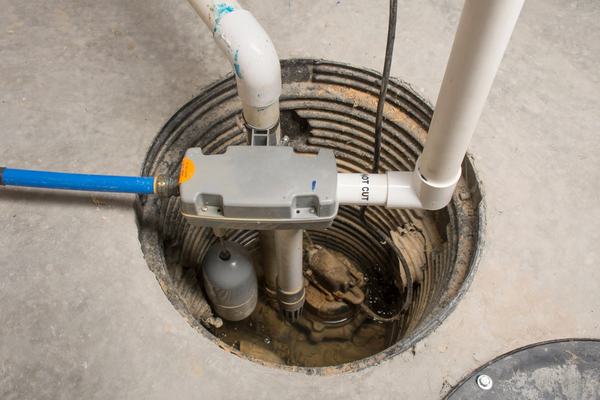Recommended Strategies for Resolving Low Water Pressure in Your Home
Recommended Strategies for Resolving Low Water Pressure in Your Home
Blog Article
We have stumbled on the article pertaining to 9 Reasons for Low Water Pressure in Your House below on the internet and think it made good sense to write about it with you on this page.

Low water pressure in your home can be an irritating trouble, affecting every little thing from bathing to washing recipes. If you're experiencing weak water flow, there are several possible causes and services to check out. In this overview, we'll discuss typical reasons for low water pressure and useful actions to attend to the concern properly.
Intro to Low Tide Pressure
Low water pressure occurs when the circulation of water from your taps, showers, and other components is weak than typical. This can make day-to-day tasks extra challenging and much less efficient. Recognizing the reasons for low water stress is important to finding the best remedy.
Usual Root Causes Of Low Tide Stress
Faulty Stress Regulators
Stress regulators are responsible for maintaining consistent water stress in your house. If they malfunction, it can result in low tide pressure or unequal flow throughout your house.
Metropolitan Water Issues
Often, the issue lies outside your home. Local supply of water concerns, such as main line leakages or maintenance job, can momentarily lower water pressure in your area.
Pipe Obstructions
In time, pipes can come to be blocked with mineral deposits, debris, or debris, limiting the flow of water. This is a common problem in older homes with galvanized steel pipes.
Rust
Rust within pipelines can lead to leakages and reduced water pressure. Rust build-up can constrict water circulation, especially in maturing plumbing systems.
Exactly How to Detect Low Water Pressure
Evaluating Pipes
Inspect noticeable pipes for indicators of leaks, corrosion, or blockages. Focus on any kind of unusual audios, such as banging or rattling pipelines, which can indicate issues within the plumbing system.
Consulting with a Plumber
If you're incapable to pinpoint the reason for low tide stress, think about employing a professional plumber to carry out an extensive examination. They can identify underlying concerns and advise appropriate options.
Examining Faucets and Components
Begin by examining the water pressure at various taps and components throughout your home. If the problem is isolated to particular locations, it might indicate local troubles.
Do It Yourself Solutions to Fix Low Tide Stress
Flushing Hot Water Heater
Sediment accumulation in the water heater can limit circulation and lower efficiency. Purging the container regularly aids get rid of debris and maintain ideal performance.
Checking Stress Regulatory Authority
Ensure that the pressure regulator is operating appropriately. Readjusting or changing the regulator can aid restore appropriate water pressure throughout your home.
Cleaning Aerators and Showerheads
Mineral deposits can gather in aerators and showerheads, lowering water flow. Get rid of and clean up these elements routinely to enhance water stress.
Clearing Clogs in Pipes
For minor obstructions, try utilizing a plumbing snake or chemical drainpipe cleaner to clear obstructions in pipelines. Beware when making use of chemicals and follow safety and security standards.
When to Call an Expert Plumber
If DIY efforts stop working to resolve the problem or if you believe considerable plumbing issues, it's finest to look for help from a qualified plumber. They have the know-how and devices to resolve complicated problems safely and properly.
Safety Nets to Keep Water Stress
Mounting a Stress Booster
Think about mounting a stress booster pump to boost water pressure in areas with constantly reduced circulation. This can be particularly valuable for multi-story homes or residential properties with high-demand components.
Tracking Water Usage
Bear in mind water use routines and stay clear of ill-using the plumbing system. Basic adjustments, such as incredible showers and laundry lots, can assist preserve adequate water pressure.
Routine Upkeep
Schedule routine maintenance for your plumbing system to avoid issues such as rust, leakages, and obstructions. Resolving minor problems early can help prevent even more considerable repair work later on.
Verdict
Handling low water stress can be frustrating, but determining the underlying causes and executing suitable options can restore ideal circulation throughout your home. Whether it's cleansing aerators, inspecting pipelines, or speaking with a plumber, taking aggressive actions can guarantee a steady supply of water for your day-to-day needs.
FOUR WAYS TO FIX LOW WATER PRESSURE NOW
Turning on a shower or faucet only to find the water comes out in a sad, slow drizzle is never a good feeling. How exactly are you supposed to wash a pan or take a quick shower when it takes 10 minutes just to rinse off a little soap? The good news is that when your water pressure is bad, there's always a cause: typically one that can be easily fixed. Here are some of the most common causes of low pressure and what you can do to fix the issue:
DEBRIS AND MINERAL DEPOSIT BUILDUPS
If you notice low water pressure from just one or two of the fixtures in your house, the problem likely has to do with debris buildup. Water is full of minerals and other debris, all of which can accumulate in your pipes and on your fixtures. This can cause a blockage that affects how much water flows through. To fix this, try filling a small plastic bag with white vinegar, and use a rubber band to hang it around your showerhead or faucet. Let the head of the fixture soak for a few hours, and the vinegar should loosen the deposits.
WATER LEAKS
Leaks are another common cause of low water pressure. If water is flowing out of your plumbing through a hole or crack before it can reach your fixture, the pressure coming out of the faucet or showerhead will be lower. A plumbing professional is your best bet for finding and repairing a leak in your water supply pipes.
Leaks are another common cause of low water pressure. If water is flowing out of your plumbing through a hole or crack before it can reach your fixture, the pressure coming out of the faucet or showerhead will be lower. A plumbing professional is your best bet for finding and repairing a leak in your water supply pipes.
A VALVE ISSUE
If you have low water pressure throughout your home, check your main shut-off valve to make sure it's completely open. You may also want to see if there's a pressure-reducing valve installed. If there is, have a plumber help you adjust the settings to get the pressure you're looking for.
OTHERS USING WATER
Believe it or not, your low water pressure could be caused by your neighbors. If you notice low pressure at certain times of day, it may be because you and the people living next to you have similar schedules - when everyone is showering at the same time, the pressure will be lower in every home. Low pressure throughout the neighborhood may also be caused by an issue with your municipal water supply. If that's the case, call the supplier to see if they're working on the issue.
https://www.rotorooter.com/blog/water-leaking/low-water-pressure-fixes/

Hopefully you enjoyed reading our article about Low Water Pressure in the House?. Thank you so much for taking a few minutes to browse our content. Loved our post? Please share it. Let someone else discover it. I love your readership.
Free Estimate Report this page